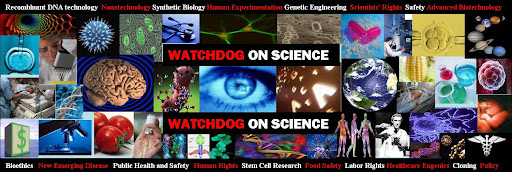Below is a great story from researcher Celeste Monforton at Georgetown University relaying the facts surrounding a worker's death at her university and the difficulty of her finding adequate disclosure by OSHA. Her story shows how difficult the government is making it for the public to understand the facts surrounding the numbers and the degree of injuries and deaths that workers face in America every day. This type of secrecy and non-disclosure is used to protect industry from liability and regulations. The public needs more transparancy and disclosure of work-related deaths, injuries and illnesses. It is time to priotize protecting hard working Americans from injury and death.
http://thepumphandle.wordpress.com/2009/07/20/interpreting-oshas-on-line-data/
Interpreting OSHA’s on-line data
Last fall, Mr. Rosaulino Montano, 46, a worker on my campus at the George Washington University, died when he fell seven stories while installing windows on a new $75 million residence hall. Mr. Montano was an employee of Engineered Construction Products, and because his work-related death occurred at my place of employment, I was particularly interested in tracking the OSHA investigation until the case was closed. I wondered whether there was a “controlling employer,” such as a general contractor or even if my employer, GWU, and whether they had some responsibility for safety at the site.
Over the next few months, I used OSHA’s Establishment Search Page in an effort to monitor progress on the investigation, but consistently received the same unsatisfactory message: “Your Establishment search returned O results.”
Figuring that I was probably not using the search tool correctly, I spoke to a very helpful woman in Balt/DC OSHA Area Office. She informed me that if a case is still open, it will not appear in the publicly available database, even though the search tool allows you to select “Open” for the prompt “Case Status.” I chalked this up to a glitch in the system, and decided I would simply file a FOIA request at about OSHA’s 6-month statutory deadline for issuing citations and penalties.
I sent my FOIA request to OSHA’s Balt/DC Area Office, and they responded promptly, sending me a copy of the citation and notification of penalty for Engineered Construction Products. The firm received one serious violation for violating OSHA’s fall protection standard (1926.501(b)(1)) and a monetary penalty of $2,500. This was the only citation and penalty issued in relation to Mr. Rosaulino Montano, 46, fatal injury. No other employers, such as my employer George Washington University, was deemed responsible for ensuring safety at the site.
Now that the case is closed, when I use OSHA’s Establishment Search Page, I no longer get the “O results” message. Instead, I get a response that raises more questions than it answers. Here’s a screenshot, and note the message:
“This violation item has been deleted.”
What does OSHA mean the “violation item has been deleted”? I searched OSHA’s Field Operations Manual and didn’t find a single entry explaining how a violation is deleted. Can someone explain what this means, or better yet, can OSHA put a legend or explanatory text on this webpage to help us interpret this on-line data?
If you look at the screenshot, the page offers other data points that are not self-explanatory. For example:
•ViolType: Serious
If the “violation item has been deleted,” what is this serious violation?
What about these entries:
•NrInstances: 1
•NrExposed: 3
Is it correct to assume Nr means “number,” as in ”number of instances” and “number of exposed”? Here too, a little legend explaining these data points and why they are relevant would be helpful. For example, does “NrExposed:3″ mean that three workers on the site were also not provided with appropriate fall protection, as required by 1926.501(b)(1):
“Each employee on a walking/working surface (horizontal or vertical surface) with an unprotected side or edge which is g feet or more above a lower level must be protected from falling by the use of guardrail systems, safety net systems, or personal fall arrest systems.”
The data points “NrInstances:1″ and “NrExposed:3″ may mean something to those inside OSHA, but not to us on the outside.
Similarly, can someone fill me in on the meaning of: “REC: A”??
Finally, the screenshot shows a datapoint for “Gravity” with the notation:
•Gravity: 10
Because there is not legend for these entries, is it safe to assume that this value of “10″ refers to the IMIS codes listed on page 6-6 of OSHA’s Field Operations Manual. According to the table on page 6-6, a violation of “High Severity,” “Greater Probability” and “High Gravity” gets an IMIS Code of “10,” the highest possible code. That’s a troubling finding by OSHA, right?: a high severity, greater probability and high gravity violation. Sounds like something that should go on the company’s permanent records, ESPECIALLY since a worker lost his life in the situation.
So, back to my original question: looking at the screenshot for the citaitons and penalty associated with the investigation of Mr. Rosaulino Montano’s death, it looks like the company agreed to pay a $2,500 penalty in exchange for having the violation deleted? OSHA Underground, OSHA Above Ground, am I understanding that correctly?
Better yet, because not everyone is on one-on-one blogging terms with OSHA Underground and OSHA Above Ground, a simple solution would be explanatory legend for this OSHA’s Establishment data. It would really help the public interpret the data that OSHA makes available to us, and understand better how the agency’s enforcement system really works.











